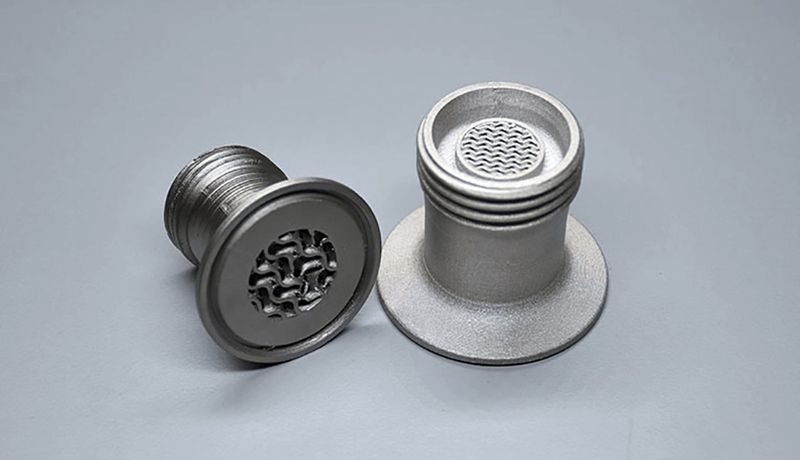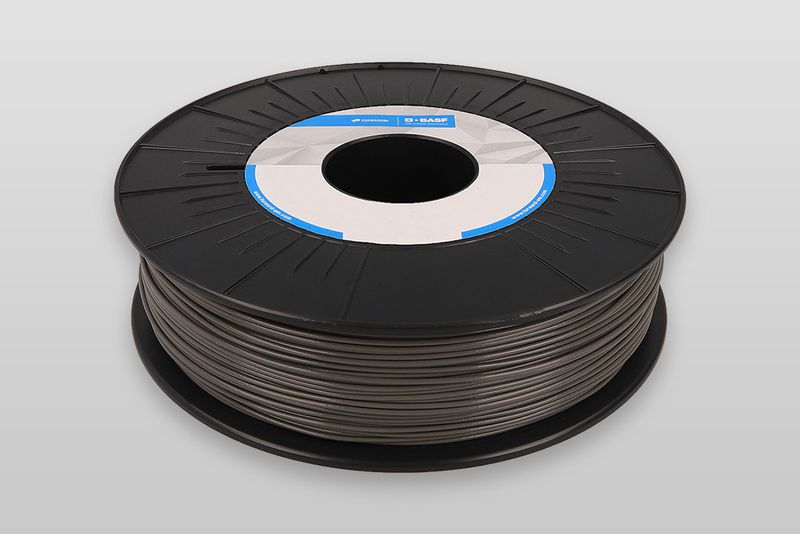The BASF Ultrafuse 316L is an innovative metal-polymer composite filament designed specifically for FFF printing. The material contains about 90% of 316L type stainless steel metal powder evenly distributed within the polymer binder matrix. Due to its non-slip outer surface, the Ultrafuse 316L filament can be printed with both Bowden and direct drive extruder types, and its high flexibility allows it to be used in complex filament transportation systems. This makes the Ultrafuse 316L suitable for almost any conventional FFF machine, providing the user with a completely new experience of fast, convenient, and cost-effective industrial-grade metal 3D printing. The filament form eliminates the potential hazard of fine metal particles exposure, compared to powder-based metal 3D printing technologies, like SLM.
Printing conditions for the Ultrafuse 316L are pretty moderate. The print bed should be heated up to 90–120 °C, and the optimal extruder temperature is 230–250 °C. It is recommended to use abrasion-resistant nozzles with a diameter of 0.4 mm or more. Be sure that the nozzle is completely clean and does not have any remnants of previously used plastic filament. The first layer adhesion is crucially important, so the manufacturer recommends using a glass print bed surface with a layer of adhesive. For better adhesion you can build a brim or a raft, that will also help you to avoid warping issues. And the cooling fans should be turned off while printing to avoid warpage or layer delamination.
Metal parts built with the BASF Ultrafuse 316L acquire their final mechanical properties, like strength and hardness, after debinding and sintering. In the catalytic debinding process most of the polymer binder is removed, and the following sintering at the temperature just below the melting point of the metal removes the secondary binder, leaving a pure metal part with excellent mechanical properties. You can have your green parts debound and sintered with the help of an outsource service, in case you do not have the appropriate equipment. Sintering process causes noticeable part shrinkage, so it is strongly advisable to scale up your digital model to get the part with the expected dimensions. The scaling factor for XY axis is 1.20 and for Z axis is 1.26.
Thanks to its great mechanical properties as well as considerable time and cost effectiveness, the BASF Ultrafuse 316L filament is a perfect solution for a large variety of applications, such as functional prototyping, including moving parts printing, medical, food, and chemistry equipment manufacturing, tooling, jigs and fixtures, and automotive parts production, fabrication of mold inlays with near surface cooling, and much more.

The BASF Ultrafuse 316L 1.75 mm metal 3D printing filament is sold in 3 kg spools. It comes vacuum-sealed with desiccant.

Update your browser to view this website correctly. Update my browser now